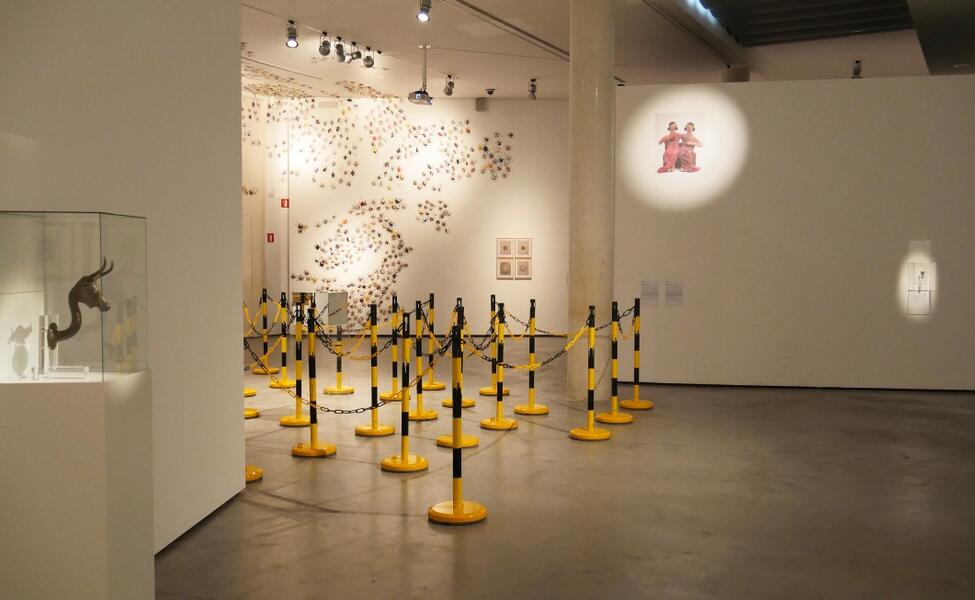ELLS I NOSALTRES: A CURATORIAL PROJECT THAT EXPLORES THE LINK BETWEEN MEN AND ANIMALS
At Es Baluard Modern and Contemporary Art Museum of Palma (Mallorca, Spain) inaugurates an unprecedented exhibition tomorrow. Ells i nosaltres (They and us), puts into dialogue works of different periods -from baroque to contemporary art- focused on the analysis of the figure and conception of the animal and the human throughout the history of humanity through art.

Based on a curatorial thesis by Nekane Aramburu, curator of the exhibition, Ells i nosaltres aim to illustrate the symbiotic relationship, on the one hand and contradictory, on the other, between the zoological world and human societies throughout history. Combining works of Baroque and Renaissance -where the pre-Darwinian distinction of man-animal that differentiates between 'humans' and 'animals' until the review of the most significant social, economic and legislative changes- up to the movements and currents (including the contemporary art) governed by a post-Darwinian conception where human-non-human animals are distinguished.
Regarding the thesis that gave rise to the exhibition, Aramburu explains: "What has happened now is that the Balearic autonomous community and the project have acquired new nuances and approaches given the peculiar situation of the islands. Ecological, legislative and socio-cultural.” It is for these questions, that the exhibition project tries to explore the themes from a local and international perspective from a strategic place - the Balearic Islands - to the most important environmental and geopolitical crises of the 21st century.
Also, the relationship between 'humans' and 'non-human animals' that analyzes the exhibition is traversed by other themes such as leisure, communication, entertainment and industry. "It is curious to understand how in the beginning man depended completely on animals, which is currently the reverse given to the transformation of these into instruments of the productive chain or the displacement of the affections", argues the curator. These forms of communication are those that have been treated from contemporary art: according to Aramburu, an example of this are the works of Juan Luis Moraza where the Spanish artist "reveals the codes and colors that nature adopts for its survival", alluding likewise to work within each ecosystem. The same happens with the dialogue established between the video art by Amparo Garrido and the painting by Jean Jacques Agasse. All of it at Ells i nosaltres.
Constituted by works by artists of the stature of Picasso, van de Velde, Goya and Miró, among others, this sui generis sample also proposes the transversality of disciplines articulating education, medicine and communication within the curatorial process of the project. "This has led to a large cartography of issues from the perspective of Western and non-Western, with issues relating to iconography, food, leisure and crafts, bioethics and a hundred other issues," said Aramburu.
Finally, the work carried out in the Es Baluard aims to explain the relationship between domestic animals and their "owners", men, dealing, in this way, issues such as the right to life, dependence, humanization of pets, the binomial destruction -extinction of the ecosystem or habitat and climate change-, torture, the anthropomorphic and the sacred.
Ultimately, rather than establishing an artistic significance, Ells i nosaltres tries to establish a debate -motivated by a series of activities that will take place within the framework of the exhibition- within society based on curatorial ingenuity. "It is not about including pieces at an image or iconic level, but rather that the conceptual is very interesting. The complexities of content come in addition to the rapid advance of ideological changes and fundamentals regarding animalistic and speciesist tendencies that require more time for reflection, "says the curator and adds," In these thematic projects we advance social movements and changes that are about to happen. " That peculiarity, precisely, is what makes Ells i nosaltres an interesting project for its contemporaneity, or rather its actuality.




